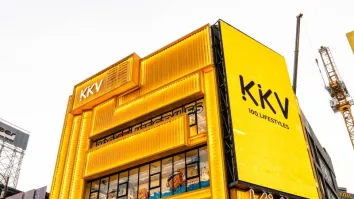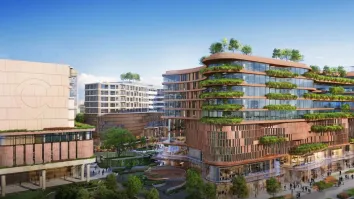GLITZY MALLS - Keep reinventing retail space
Today's glitz is tomorrow's so-what? average. Intellivent and anticipatory mall design offers the solution for sustained shopper appeal, argues Jeremy Salmon, Shanghai-based director at global architecture, urbanism and design practice Broadway Malyan.
In my experience, designing successful retail developments is all about plugging into the psychology of the customer and anticipating the market.
Developers are happy when their schemes are filled with people and activity, creating a buzz, being talked about and, above all else, being used.
Lefo Mall in Suzhou, China
People are happy when their aspirations and expectations are being catered for – when they get more from a ‘shopping experience’ than simply buying things which, increasingly, they can purchase online. They want a sense of fulfilment, satisfaction and enjoyment.
As retail designers, it is our job to shape these spaces to make them work for the customer’s ‘front of house’ expectations whilst being fully in control of the back of house infrastructure and commercial planning criteria – two very different types of knowledge that must come together in a unique way on every single project. It is clear to me that there is a pattern to the evolution of shopping malls and it is directly linked to the economic and social development of their locations.
Emerging economies want different things to emerged economies. The customers in each have very different life experiences and expectations. What is breakthrough and ground-breaking in one country may well be reaching the end of its cycle in another.
If we look more closely at the ‘glitzy mall’ – and define that as something based on creating bright, clean, clear and attractive spaces with units for high-end and aspirational brands – there is an interesting pattern.
First generation malls, like those in Chinese cities such as Shanghai and Beijing, essentially had it easy. When you are the only modern, clean, well-lit, internal air-conditioned shopping environment in town with the only line-up of desired international top brands, you can build it and people will come.
Moreover, this was always going to happen in step with the emergence of a more affluent middle class, fuelled on increasing access to images of a western lifestyle and wanting these brands. For me, these schemes were ‘Glitzy Generation 1’. In some cases, occupier brands did 90% of the experience-creation job for you. Offer me the first H&M or Zara, or the first Gucci or Prada, in a region or city, and I’ll be there! Once rival malls have opened, the game changes.
Equally, once customers have sated their initial desires to have, own and feel good, about certain ‘new’ brands, malls have to work harder to give them a heightened or differentiated experience.
Take a recent repositioning project we completed for Ivanhoe Cambridge and the Bailian Group in Changsha, Hunan province. By no means can this mall compete in decorative terms with contemporaries in Shanghai but, within its context, the transformation from a dark, badly-planned, locally-tenanted, anonymous mall to a clean, visually exciting, modern and most importantly, the only H&M, Zara tenanted mall in Hunan province, completely animated the target late teen local customer base, energised with their first taste of having a disposable income.
Look then to IAPM in Shanghai. This project seeks to appeal to the established and savvy first tier China customer base, well-versed in their couture shopping experience. Cleverly, the interior is both white reserved chic and highly decorative: a design statement, because this differentiates the mall from the existing high-end branded couture malls within walking distance. It is decoratively glitzy by direct comparison to its neighbours but, to pose the killer question, is it actually providing enough of a new experience for the customer? Is the differentiator of a decorative investment enough to maintain a market position for long when other new malls in the same area are changing the experience of shopping into an entirely different entertainment/ arts/ urban farm experience, such as K11 on the same Huaihai strip?
Finally, turn up the market maturity demands even further and look to Japan, now with its fifth generation emerged wealth and my current favourite glitzy mall, Tokyu Plaza Omotesando Harajuku. High-end brands, capital A architecture and an urban forest park experience on the roof – leading the glitzy Asia pack but only for now perhaps.
So, my observation is that the burden of responsibility rests with designers to keep reinventing retail space for the next generation and the next set of customer expectations aligned to the context – where, when, and catering for whom.




















 Advertise
Advertise





